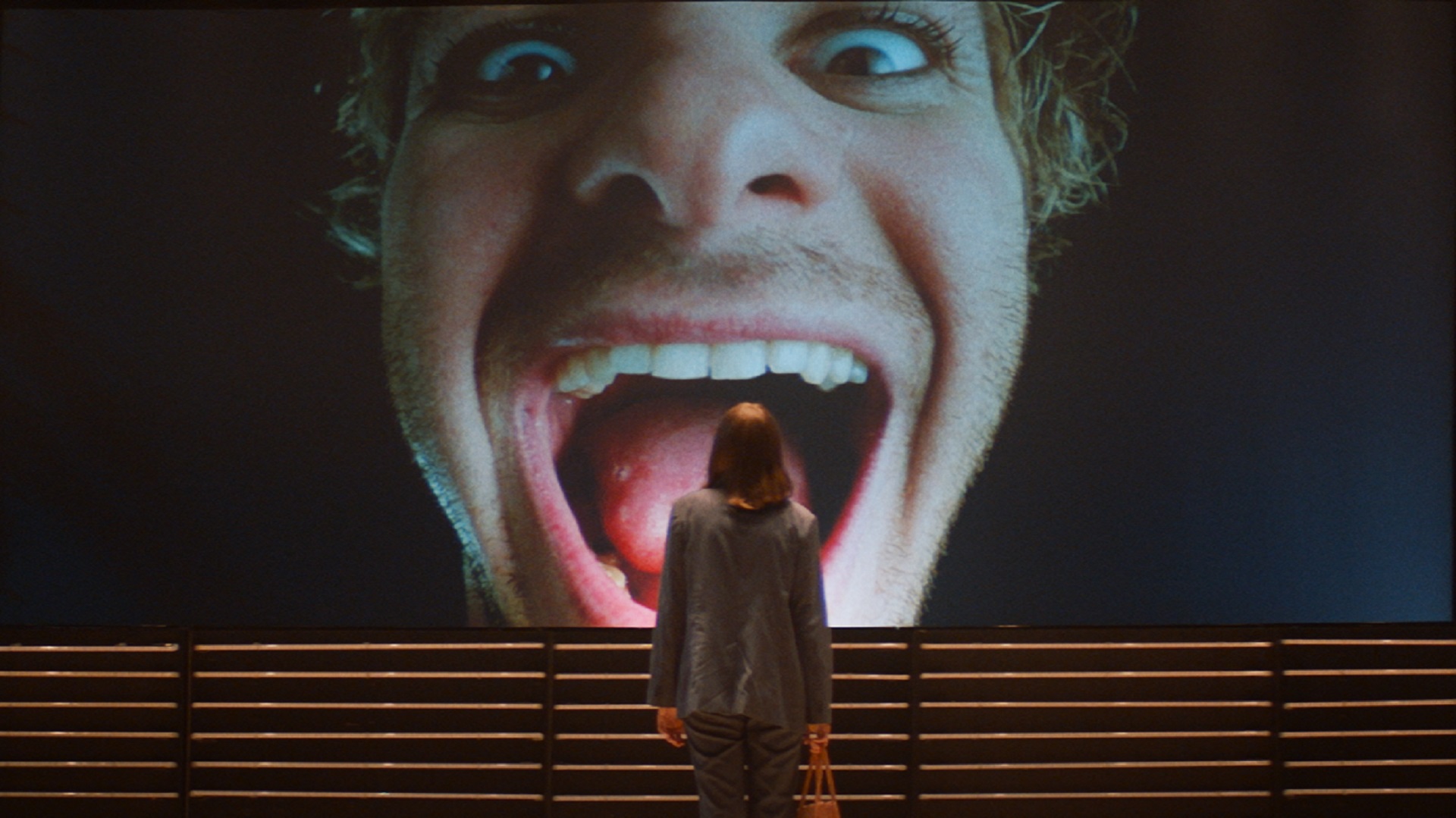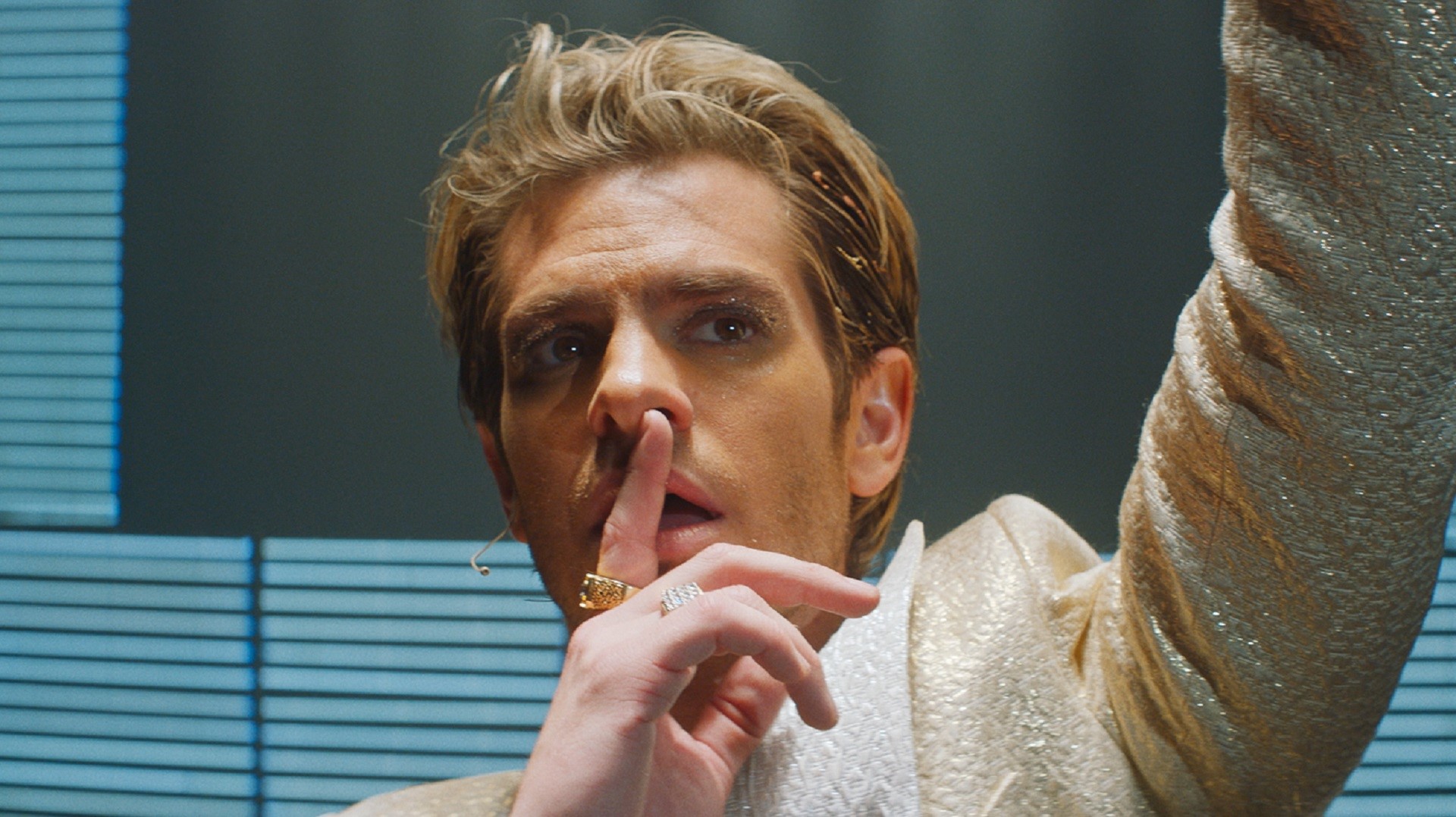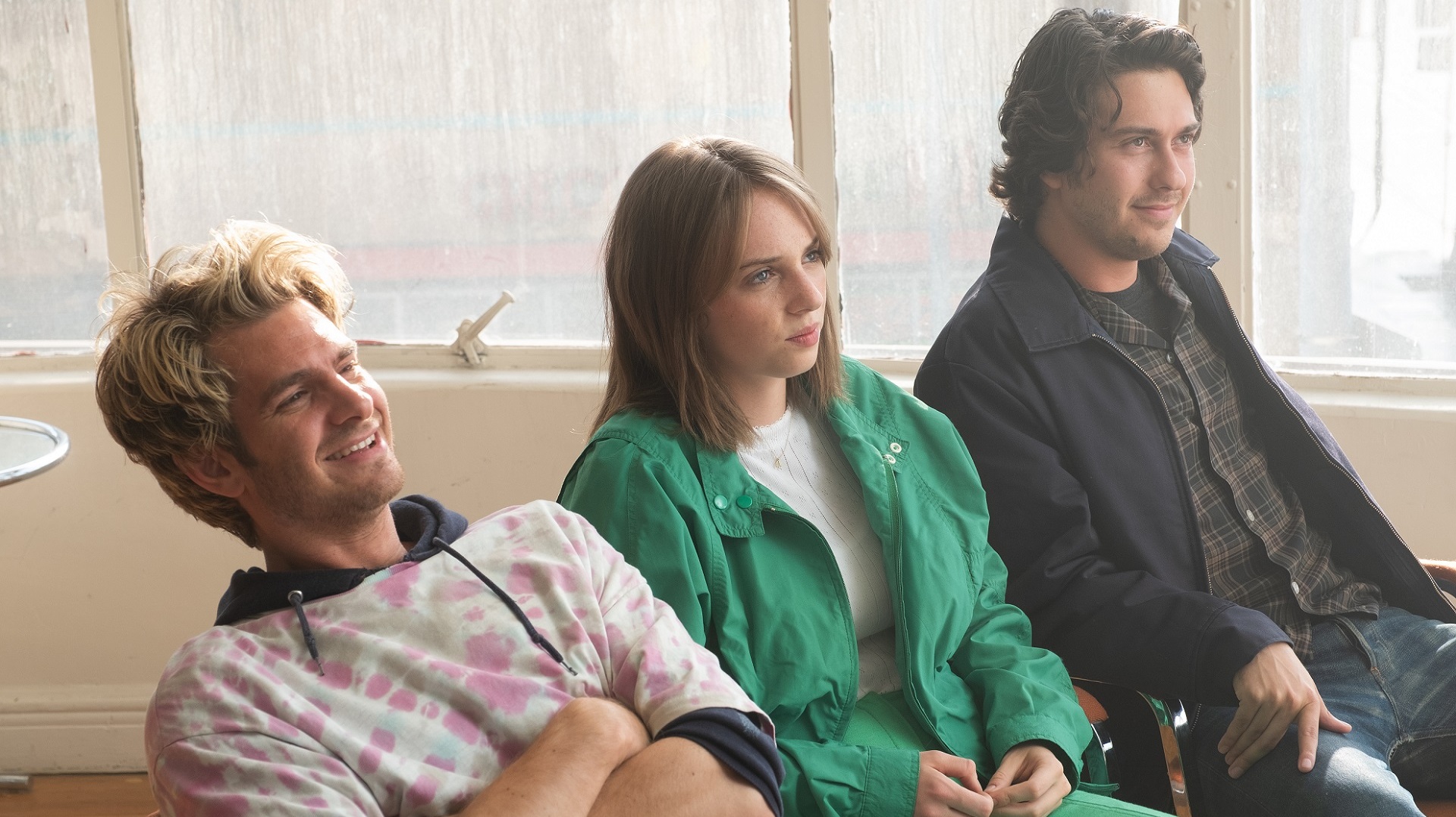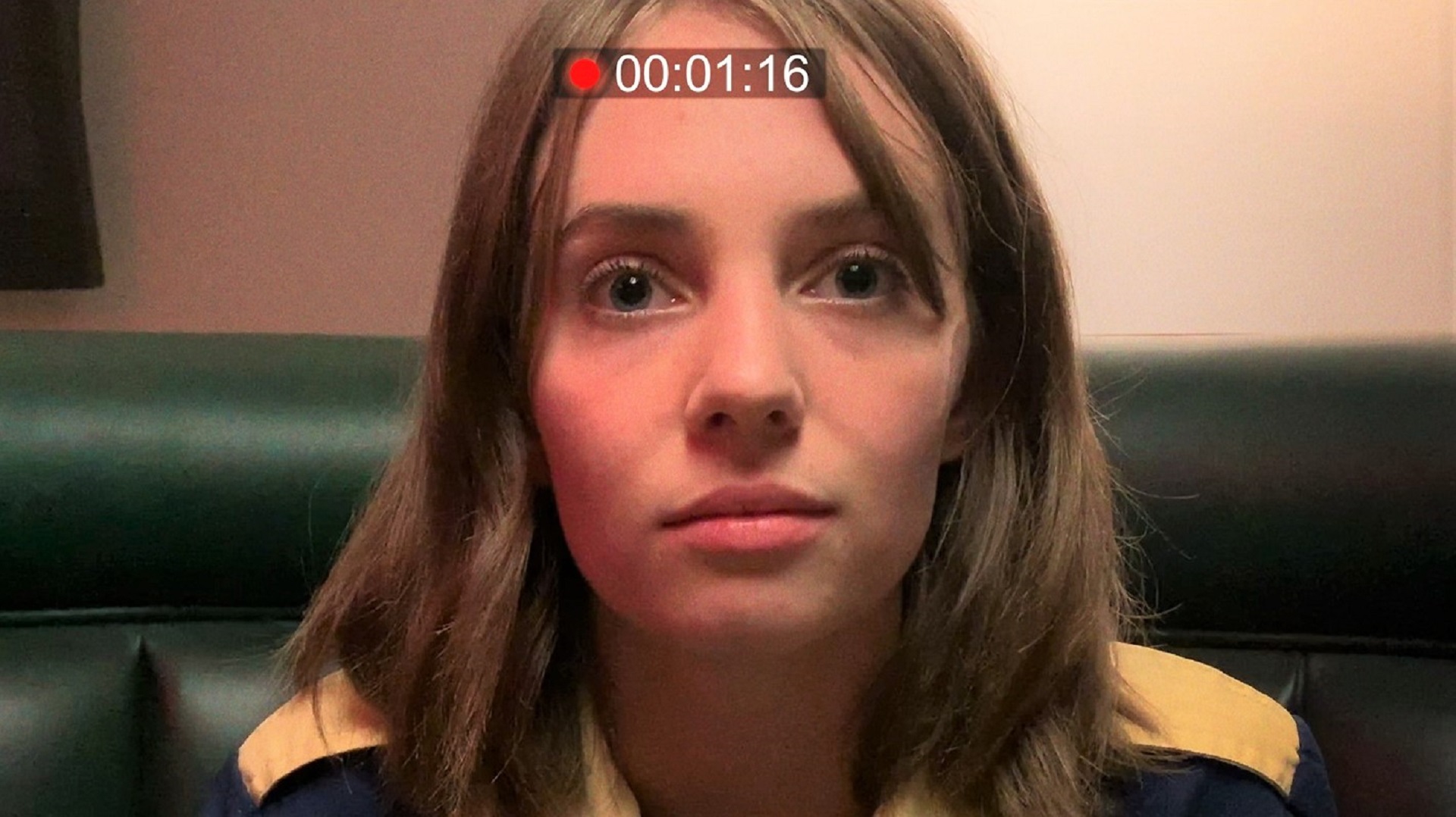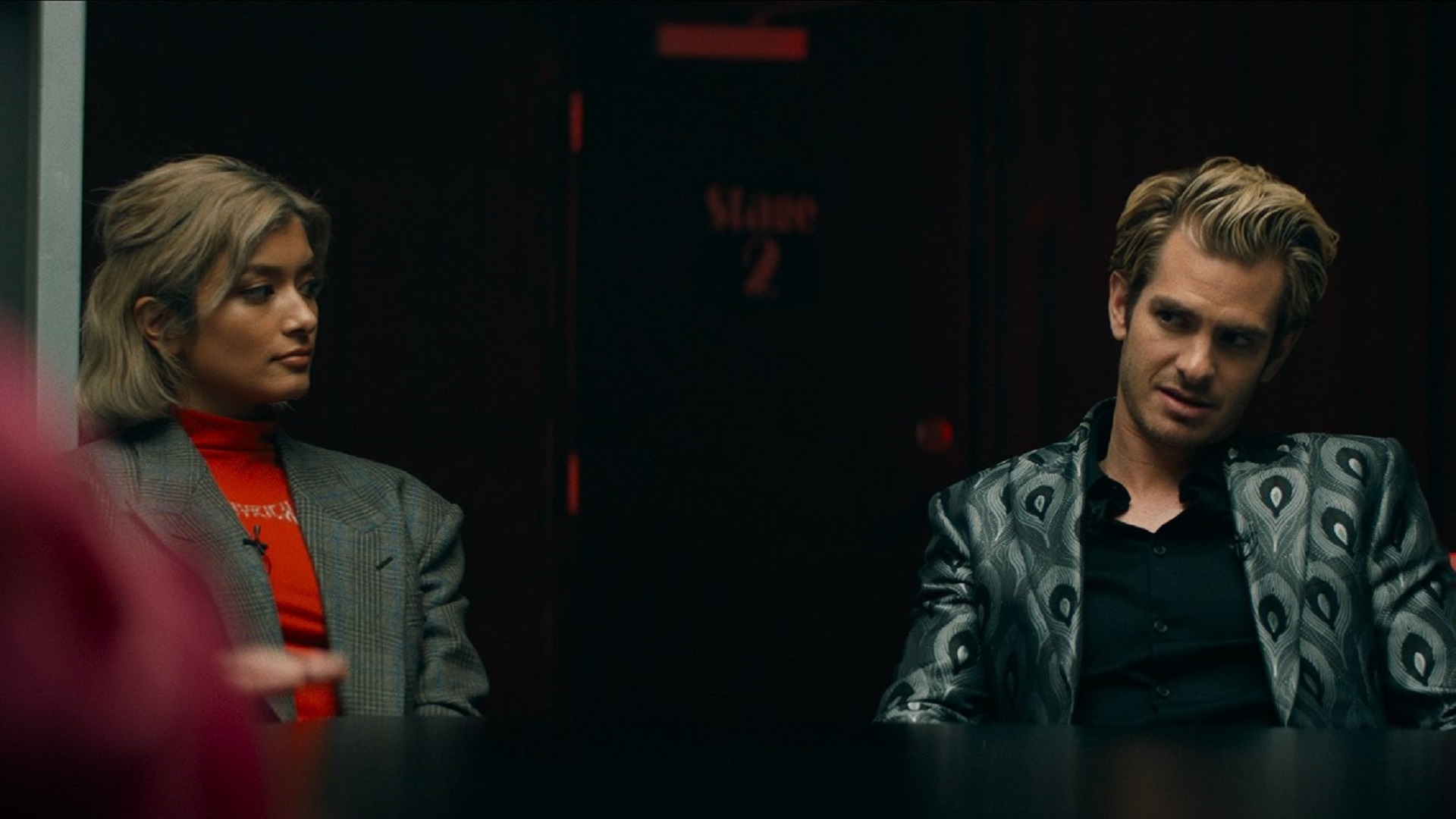In Japan, we are often witnessing the pleasures, stimulation, and dangers of gaining fame on social networking sites, through the examples of, say, runaway YouTubers. The desire for recognition or the ambition to be someone special is something we all feel in real life today. The film “Mainstream”, which depicts young people exploring their own identities and becoming uncontrollable out of the feeling of “wanting to be famous” that everyone would have, has just been released on October 8. The film is directed by Gia Coppola, granddaughter of Francis Ford Coppola, niece of Sofia Coppola, and known for her feature film “Palo Alto Story” (2013).
In “Mainstream,” a film about pleasure and destruction through social networking and video posting, the love story revolves around three people, Frankie (Maya Hawke), an aspiring filmmaker, Link (Andrew Garfield), a gifted storyteller, and Jake (Nat Wolff), an aspiring writer, holding a certain vulnerability and madness. At the same time, small details such as Instagram and the quality of the videos bring a sense of realness and tension. What kind of question does the film “Mainstream” pose to those of us living in the age of social networking? Let’s think about it from the words of Gia Coppola.
To live free from the gaze of others and the desire for recognition
–This is your first feature film in about seven years since “Palo Alto Story. In that time, social networking sites have developed rapidly and influencers have emerged. Is “Mainstream” based on an idea that you had had for a while? Or was it inspired by a specific event? What inspired you to make it?
Gia Coppola: When I made “Palo Alto Story,” I enjoyed the filmmaking itself, and I was so happy with the opportunity that I put everything I had into it. And after it was released I was too tired to think about a specific vision for the future. However, I had a vague image that my next work would not be a concept for making a film, but rather a work through which I would delve into a theme that I could relate to. With time on my hands, I watched Elia Kazan’s film “A Face in the Crowd” (1957) and realized that there were many points that matched the present situation. Of course, it was a time without the Internet and smartphones, but I thought the situation was going in the same direction as it is today. Also because I liked the way it portrays the love story, and I solidified the film’s theme based on the idea of creating a modern version of it. Around the same time, a friend of mine who manages influencers told me about their daily life and the influence they have on a great number of followers of them. The outline of the work became clearer as I became interested in the rules and mechanisms of getting “likes.”
–More than 50 years have passed since the release of “One Face in the Crowd,” and although the means have changed from television to YouTube to social networking sites, I feel that the human desire for recognition and ego have not changed.
Coppola: It really is. Nowadays, we tend to focus only on the number of followers and likes an influencer has. But I think that’s the wrong message, and I don’t think it’s an act that will necessarily lead to emotional satisfaction in the long run. Rather, through accepting ourselves by enriching our relationships and getting in touch with nature, I think we can feel the joy of living, free from the gaze of those around us and the desire for recognition.
–I was impressed by the realistic depiction of Link portrayed by Andrew Garfield, who is seemingly fragile and weak, but then goes out of control in his search for recognition. Are there any influencers or specific people whom you based that character on?
Coppola: The model was Andy Griffith. Considering the fact that Andrew (Garfield) plays the role, we built the character, thinking about how we show the insanity of Link as well as how we can let him feel the fun of playing him. I talked with Andrew and created the character of Link together, keeping in mind that we are now live in an age where everyone can have instant gratification simultaneously in the world, and everyone can have his/her own way. Also, I was hoping to see his expression that I hadn’t seen before in the roles he had played.
— The name of the crew, “No One Special,” at first glance seems like it could apply to anyone. On the other hand, it’s a word that symbolizes the film “Mainstream” and has the potential to make people easily go crazy. Can you tell us the reason why you named the crew “No One Special”?
Coppola: I had been thinking about what to call it for a long time, and it was Tom’s (Stuart) idea to call it “No One Special. I couldn’t think of any other word than that because it expresses the irony involved in the whole work.
Finding hope for the future in young people who are sensitive to social and environmental issues and take action
–As the story progresses, Link and Frankie become emotionally imbalanced. And the way you portrayed it was so real that it made me tingle. Have you ever thoght of filming Link as a storyteller, gradually dominating the life of the free minded Frankie?
Coppola: It sounds interesting. It’s very difficult to find the right balance, but because I depicted a story from Frankie’s viewpoint, I think I was able to create a realistic representation of her being swept up by Link. By depicting her as a main character being overwhelmed by an even bigger presence, I think I could have audiences feel what Frankie is feeling and how she is being controlled by Link’s insanity. Therefore, I dared to make the plot develops from Frankie’s point of view. If I depict the story from Link’s point of view, some people may feel uncomfortable with his words and actions.
–As for the love story, I got the impression that Frankie’s infatuation with Link represents the feelings of a teenage girl who yearns for a bad boy. Does she reflect any of the feelings you had as a teenager?
Coppola: I really like love stories, but aside from my personal feelings, I think we all experience the longing for the bad, or the longing for what we can’t have, or the romantic feelings we have for people we shouldn’t like, or the painful process of growing up. I always want to incorporate things that everyone has experienced in their lives.
–Recently in Japan, in addition to the people like “annoying YouTubers,” violence on SNS has also become an issue. What do you think about the present situation surrounding SNS?
Coppola: Social networking sites are a lawless zone, so it’s dangerous to send out what you want to say irresponsibly. A similar message was sent out in a documentary film “I Love You, Now Die,” which focuses on cell phone texting and cyber bullying. However, there is a definite increase in the number of young people who react sensitively to social and environmental issues, express their opinions, and take action through SNS. I feel a sense of hope for the future in those people.
–You are also a photographer. How did you maintain your creative motivation during the Corona pandemic?
Coppola: I was reading, reading and reading. Also, my grandfather (Francis Coppola) organized a party for us to watch old movies together, and I tried to spend as much time as possible with my family.
–Finally, you directed a commercial movie for United Arrows, and you have a lot of connections with Japan and many Japanese fans. Please tell us about your impressions of Japan.
Coppola: I really love Japan, and I only have the impression that I had fun making the commercial. There are so many wonderfully talented people, including Kiko (Kiko Mizuhara). Kiko is now active on the world stage, but even back then I felt that she had outstanding talent. I would definitely like to work in Japan after the end of Corona disaster.
©2020 Eat Art, LLC All rights reserved.
Gia Coppola
Gia Coppola is a granddaughter of Francis Ford Coppola, born in Los Angeles. In addition to working as a photographer, she has directed commercials for United Arrows featuring Kiko Mizuhara in 2015, and music videos for various artists. In 2016, she released a film related to the Gucci Pre-Fall collection. She scripted and directed “Mainstream”, her second feature film following “Palo Alto Story” (2013).
Mainstream
Release date: October 8, 2021
Venue: Nationwide roadshow including Shinjuku Piccadilly
Distributor in Japan : Happinet Phantom Studio
Official Website: Mainstream
Official Twitter: @mainstream_jp
Official Instagram: @mainstream_jp
Translation Shinichiro Sato(TOKION)

